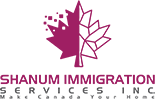C-11 (IMP) work permits — what they are, who can apply, and how they can lead to PR
Overview:
C-11 is an LMIA-exempt work-permit pathway under Canada’s International Mobility Program (IMP) used mainly for entrepreneurs and some self-employed professionals whose proposed activities would provide a significant economic, social or cultural benefit to Canada. If you have extensive business managemnet expereince as a nowner or at an executive level position, this program is for you. Let’s break it down for you.
1) What “C-11” actually is?
-
C-11 is the administrative/exemption code used in processing to identify work permits issued under the IMP for entrepreneurs / self-employed / significant benefit cases (often described as “entrepreneur” or “self-employed” IMP files). It’s not a separate PR program — it’s an LMIA-exempt temporary work permit category that relies on the “significant benefit” concept under the Immigration and Refugee Protection Regulations (IRPR). IRCC analyses and evaluations of the IMP categorize C-11 under “entrepreneurs.”
2) Who can apply / typical profiles
Typical C-11 applicants include (but are not limited to):
-
Entrepreneurs who want to start or purchase and actively manage a Canadian business.
-
Self-employed professionals (artists, consultants, tradespeople, small-business operators) whose presence and work provide cultural, social or economic value.
-
Start-up founders who either have or are seeking support from designated Start-Up Visa organizations (there is overlap between Start-Up Visa work permits and IMP entrepreneur permits; IRCC provides specific guidance for start-up applicants).
Important: IRCC treats “self-employed” and “entrepreneur” differently. Self-employed tends to mean you personally do the core operational work and rarely hire others; entrepreneurs are expected to create jobs and broader economic benefit. Recent IRCC guidance and case law have tightened how officers assess these distinctions.
3) Eligibility / what IRCC looks for
IRCC expect clear, persuasive evidence that your presence and business activity will produce significant benefit to Canada. While there is no fixed checklist, common decision factors include:
-
Business plan / feasibility — realistic financials, market analysis, timelines, and milestones.
-
Ownership & control — IRCC expects substantial control ~50% ownership for entrepreneur cases or evidence that you will genuinely run the business.
-
Job creation / training — evidence you will create real jobs or meaningful training for Canadians/permanent residents.
-
Economic/cultural/social impact — how the business benefits a region, sector or community (innovation, export earnings, cultural contribution, services in underserved areas, etc.).
-
Applicant competence & track record — CV, prior business success, relevant credentials, client lists, contracts, letters of reference.
-
Capital & finances — proof you can fund and sustain the business during the start-up period (bank statements, investor commitments, lease agreements, equipment purchases). See next section for money expectations.
4) How much money / finances required
There is no single IRCC-mandated minimum investment for a C-11 — instead IRCC expects sufficient funds and financial evidence consistent with your business plan and the business model. Practical tips:
-
Include startup cost estimates (equipment, premises, licences), cash flow forecasts, and personal/investor funding documentation.
-
Show sustainability for at least the first 6–12 months (or longer if your sector needs that) — bank balances, investment agreements, loan approvals, escrow/deposit receipts.
-
If the business will employ Canadians, include payroll projections and evidence you can cover wages and employer obligations.
Because IRCC assesses whether your claimed plan is credible and beneficial, the quality and coherence of the financial evidence matters as much as the dollar amount. Use professional appraisals and third-party commitments where possible.
C-11 is a temporary work permit, so just like any other work permit, the officer will expect that you intend to stay temporarily Demonstrate temporary intent by:
-
Submitting a clear return/exit plan (timeline for establishing the business, milestones and indication you will comply with permit expiry).
-
Showing ties to your home country if relevant (property, family, contracts) — but note: strong ties are helpful only if consistent with your business plan and temporary purpose.
6) Can C-11 lead to PR?
C11 does lead to PR but it is itself not a PR pathway. It’s a temporary permit that can be part of a multi-step plan toward PR. Common PR routes after or while holding a C-11 include:
-
Express Entry – Canadian Experience Class if you have qualifying Canadian work experience; or Federal Skilled Worker if you qualify.
-
Provincial Nominee Program (PNP) — many provinces have entrepreneur/scale-up streams that favour people who have started a business locally.
-
Start-Up Visa -if you secure designated-organization support — there’s overlap between start-up pathways and IMP entrepreneur permits; IRCC guidance allows a temporary open work permit for some Start-Up applicants.
We can help you build your C-11 plan with a future PR route in mind so you can present connections to the chosen PR stream later.
7) Practical application tips — make your file convincing
-
Detailed business plan with conservative financials and timelines.
-
Ownership documents (share certificates, shareholder agreements).
-
Letters of support from Canadian partners, customers, or community beneficiaries.
-
Proof of funds and clear flow of money into business activities.
-
Local market evidence: contracts, letters of intent, supplier quotes, a signed lease.
-
Clear role description showing you will manage and materially contribute to the business.
-
Address PR intent transparently — explain you will respect permit conditions and outline possible PR pathways later.
8) Recent context & caution
IRCC has narrowed and clarified how it applies C-11 in 2024–2025; practitioners report higher evidentiary expectations and closer scrutiny on ownership and job creation claims. Some Federal Court decisions have also upheld refusals where evidence was lacking — so don’t rely on vague promises; bring documents.
Take away
C-11 can be a powerful temporary route for entrepreneurs and self-employed professionals who can prove a significant, credible benefit to Canada — but it’s discretionary and evidence-heavy. If you’re serious about using C-11 to launch in Canada and possibly later apply for PR, do it carefully. Hire professional who know the work. We can help by booking an introductory consultation.


Add Comment